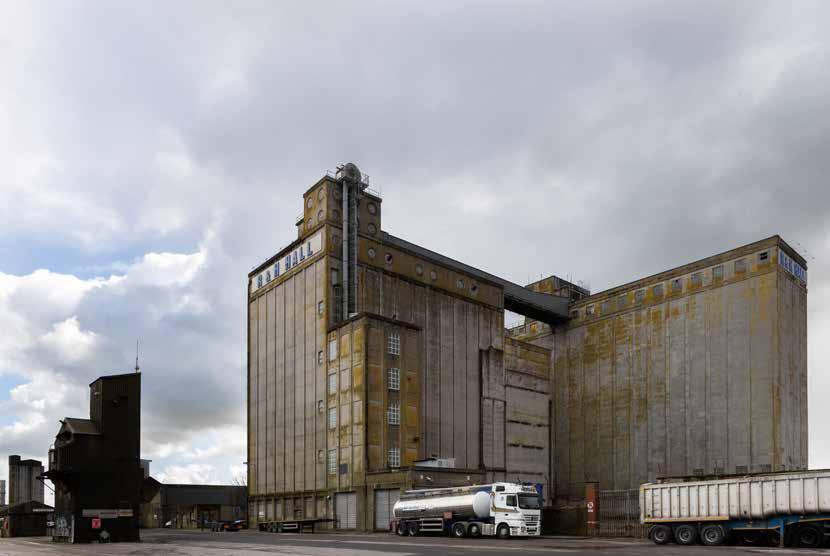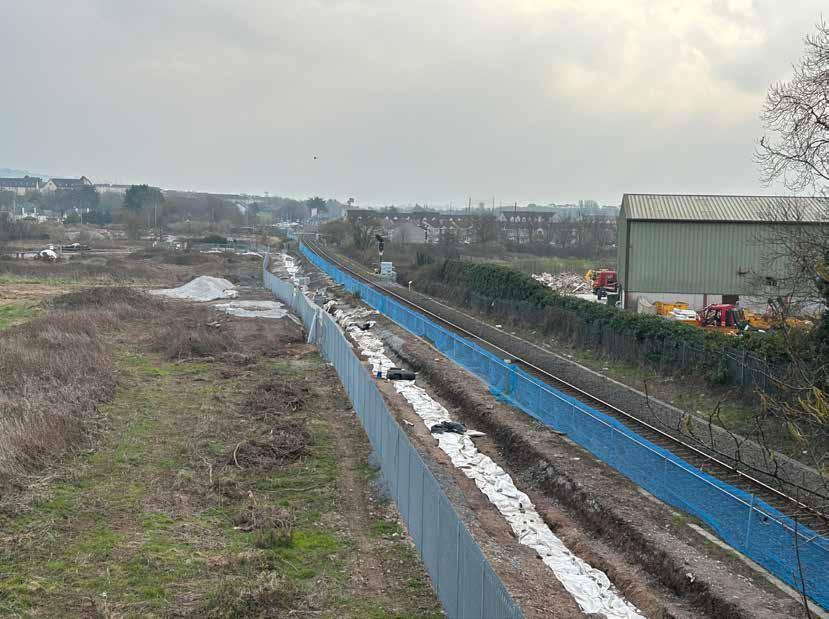
4 minute read
Cork’s old R&H Hall silos get a new life - in a railway line
In a rare example of innovative recycling on a massive scale, almost all of the concrete from the recently demolished R&H Hall silos on Kennedy Quay is being given a second life, this time as part of the upgrade to the Midleton - Cork railway line.
The project, led by O’Callaghan Properties, is one of the biggest examples of construction recycling ever undertaken in Cork. In total, around 16,000 tonnes of concrete from the silos are being repurposed for the railway works, turning a piece of Cork’s industrial history into part of its public transport future.
The silos dominated the skyline around Cork’s docklands for more than 90 years and were demolished over a six-month period in 2024.
A new approach to demolition waste
O’Callaghan Properties worked for over a year with demolition experts O’Kelly Brothers, undertaking a complex and challenging project.
In Ireland, reusing concrete from demolition projects isn’t the norm, at least, not yet. The process is heavily regulated by the Environmental Protection Agency, with strict requirements for crushing, testing and certification before the material can be used again. It’s a time-consuming and highly technical process, but one that O’Callaghan Properties felt was worth pursuing.
“We had options,” explains Brian O’Callaghan, Managing Director of O’Callaghan Properties. “The easiest thing would have been to cart the concrete off to landfill. But we wanted to do something more sustainable, ideally something local, and reusing the concrete ticked those boxes.”
Significant environmental benefits
The innovative approach has the potential to yield substantial environmental savings. By keeping the material in Cork and reusing it locally, rather than transporting it to a distant landfill or quarry, the project will save an estimated 180,000 kg of CO2 emissions. To put that into perspective, that’s about the same carbon footprint as the electricity usage of 250 homes for a year or 85 long-haul flights.
And that’s only part of the story. By using the recycled concrete in a public transport project, O’Callaghan Properties is doubling down on sustainability. After all, improving rail infrastructure is itself a climate-positive investment, encouraging more people to use trains instead of cars.

A thoughtful goodbye to the silos
The decision to demolish the R&H Hall silos wasn’t taken lightly. For nearly a century, these towering concrete structures stood as a defining feature of Cork’s docklands. But after decades exposed to the harsh weather of the River Lee, the buildings had deteriorated to the point where reuse or refurbishment was simply not viable.
Still, O’Callaghan Properties wanted to ensure the history of the silos wasn’t lost. The new buildings planned for the site, part of the South Docks redevelopment, will occupy the same footprint as the original silos, and the design will incorporate visual nods to the industrial character of the old structures. The goal is to ensure the spirit of the silos lives on in a modern, sustainable development.
Preserving the industrial story
The respect for history didn’t stop at the buildings themselves. Before demolition began, a team led by Dr. Colin Rynne, Director of the Historic Building Survey Unit at UCC, carried out a comprehensive archaeological survey of the site. Every piece of historic machinery, every detail of the silos’ working life, was carefully recorded.
Key pieces of industrial equipment were also dismantled and preserved, with the intention of eventually putting them on public display. This heritage work was done in close collaboration with Cork City Council’s heritage and archaeology officers, as well as conservation specialists Southgate Associates.
A template for future projects?
This kind of innovative, circular thinking, where demolition waste is treated as a resource rather than rubbish, is something Ireland could see a lot more of in the years ahead. As cities like Cork grow and evolve, there’s a need to balance development with environmental responsibility.
The R&H Hall project offers a real-world example of how that can work: history is documented and respected, waste is avoided, carbon is saved, and a new public transport project benefits in the process.
“We’re proud of what’s happening here,” says O’Callaghan. “It’s a win for sustainability, a win for transport, and a respectful way to say goodbye to a site that’s been part of Cork’s story for generations.”










